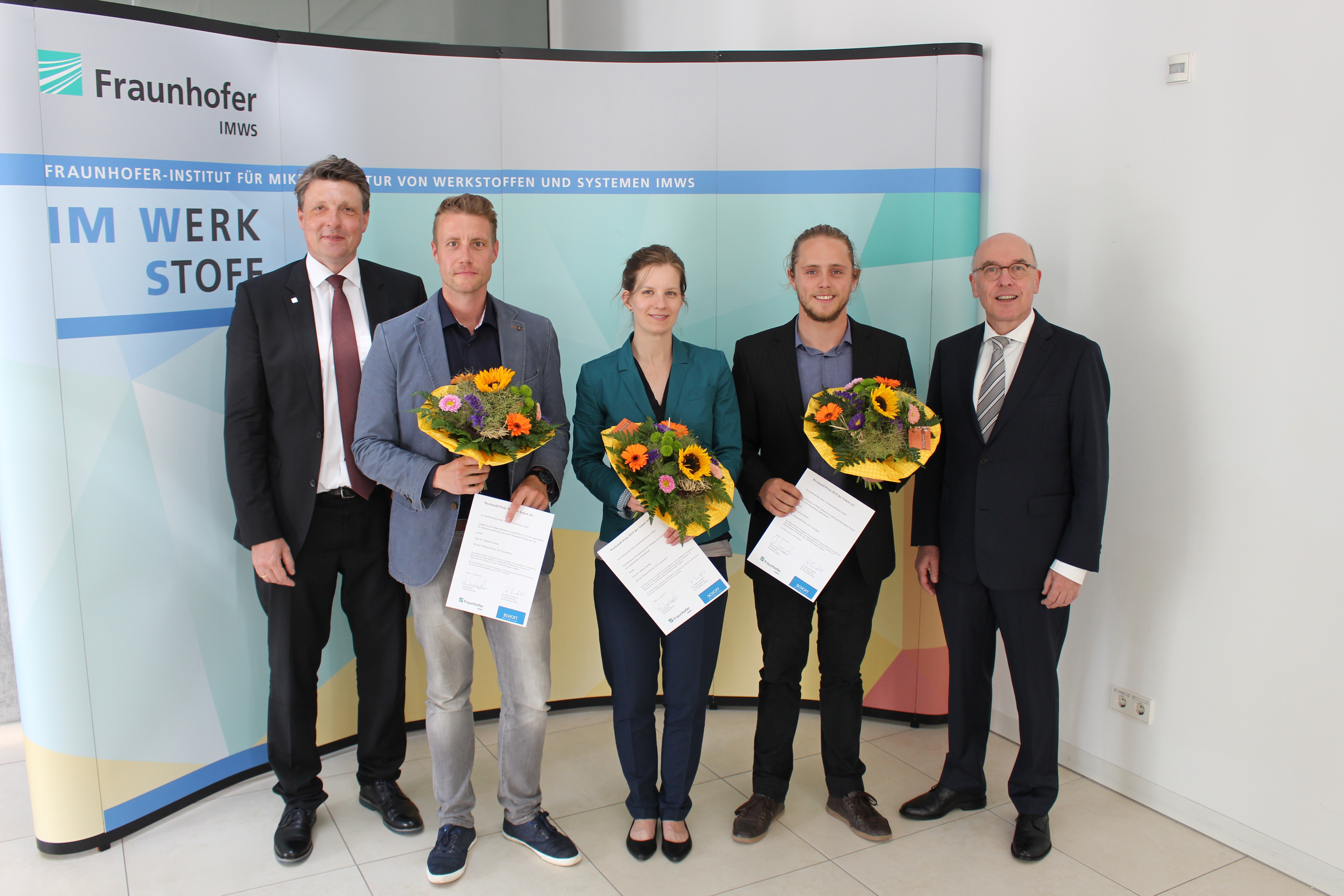The Schott AG Materials Prize is awarded to Julius Rubers
Innovative implant materials could grow more effectively into surrounding tissue through the incorporation of electrospun protein fibers. For his findings relating to this process, Julius Rubers has been awarded the Schott AG Materials Prize. He received the prize which carries 1500 euros at the meeting of the Advisory Board of the Fraunhofer Institute for Microstructure of Materials and Systems IMWS in Halle (Saale). The technique recognized by the jury could among other things do away with the need for complex sessions of post-treatment.

The award was presented by Dr. Roland Langfeld, R&D Consultant at SCHOTT AG and Chair of the Advisory Board of the Fraunhofer Institute IMWS. “The contributions submitted this year also reflected the broad range of subject areas and the high level of the scientific work carried out at the Fraunhofer Institute IMWS. The work by Julius Rubers stood out because of the large number of possible applications and, in part, because of the completely new solutions found. His idea demonstrated that innovative materials can also open up an attractive and large range of possibilities in the field of medical technology”, said Langfeld.
The solution developed by Julius Rubers for his master thesis centered on the interplay between polyether ether ketone (PEEK) and electrospun protein fibers. PEEK has excellent mechanical properties and is biocompatible. This means that it is ideal for use as an implant material capable of withstanding high loads, e.g. in bones. The protein fibers can be used as a framework for cell growth and can be manufactured ultrathin using electrospinning. The problem up to now has been that these two materials could not be effectively combined, because protein fibers do not adhere to conventional PEEK materials.
This is why Rubers, who studied biomedical technology/medical technology in Stuttgart and Tübingen and has worked at the Fraunhofer Institute IMWS since April 2018, initially concentrated on further refining the electrospinning technique. He improved the formation of a homogenous nonwoven through the incorporation of PEEK strengthened with carbon fibers. He then went on to develop a method for adhesion optimization. Here, the wet etching method proved to be the best solution. The protein fibers combine chemically with the surface of the PEEK under the influence of an active cross linker. Biocompatibility tests on the nonwoven fabric developed showed that cells adhere well to the nano nonwoven, and so an implant made of a similar material would be able to grow well into the surrounding tissue. The PEEK implants finally underwent 3D coating so as to test the method for industrial applications.
“I am extremely happy about the prize for my master thesis and regard the award as a stimulus for my scientific work in the future. The Fraunhofer Institute IMWS provided me with ideal conditions, from know-how on implant materials and surface modification, possibilities for investigating microstructures right down to the development of prototypes for 3D coating”, said Rubers.
Two further works each received 500 euro cash prizes. In her dissertation Dr. Maria Gaudig delved into the physical mechanisms underlying the formation of black silicon for maskless plasma etching. A better understanding of the processes involved in the texturing of surfaces from the micro to nano levels has potential for use in photovoltaic systems. In his dissertation Dr. Stephan Krause examined selective laser ablation for thin coatings and also developed a model capable of predicting the processes involved. This model can be used to optimize the duration of laser pulses, enabling for example semiconductor materials to be processed using this method without being damaged.
The prize awarded for the third time was open to all the budding scientists at the Fraunhofer Institute IMWS and to those who had completed a diploma or doctoral thesis with the Institute. The jury selected the three finalists from among the numerous applications submitted based on the criteria of scientific achievement, innovation, professionalism and applicability, who proceeded to describe their results in short presentations before the Advisory Board. The members of the Advisory Board then chose the winner.